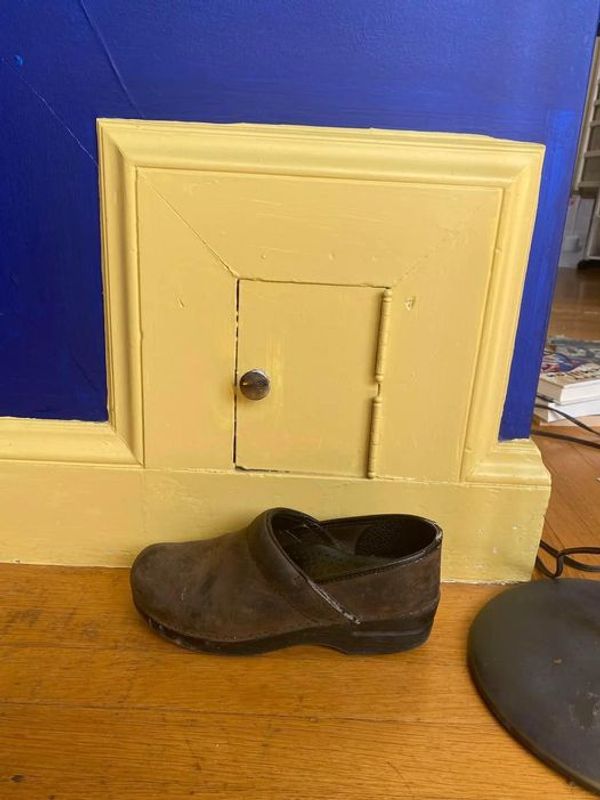Ever come across a hidden door in an old house and wondered what mysteries lay behind it? That’s exactly what happened to one curious homeowner who recently moved into a hundred-year-old house.

The house, built in 1916, boasted several bedrooms, including a peculiar one that used to serve as a sewing room. The new owner was intrigued by a tiny door hidden on the other side of a wall, leading to the sewing room. Despite searching high and low on the floor, the backside of the mysterious door remained elusive.
While the house did have a complex laundry chute system, the door seemed too small to be a part of it. Adding to the intrigue, the bedroom had its own bathroom and a closet, neither of which were anywhere near this fascinating architectural feature.
The more the owner investigated, the more questions arose. What was this tiny door for? Why was it so securely locked? And what secrets could it possibly hold?
To find the answers, we must delve deeper into the history of this remarkable house. Nestled in the historic Spruce Hill neighborhood of Philadelphia, Pennsylvania, this house is a testament to timeless elegance and architectural brilliance.
Designed by the renowned architect George Hewitt during the Victorian era, this majestic residence captivates with its intricate details and classic charm. From the ornate trimmings to the meticulously crafted porch, every element transports you back to a bygone era of opulence and sophistication.
As you step inside, you’ll be greeted by high ceilings, intricate moldings, and stained glass windows that exude grandeur. The interior seamlessly blends classic elegance with modern comfort, creating a warm and inviting atmosphere. Each room tells its unique story, reflecting the owner’s commitment to preserving the home’s historical integrity.
The discovery of the tiny door in the sewing room only adds to the allure of this house. It highlights George Hewitt’s attention to detail and craftsmanship. Behind that locked door, one can only imagine what treasures and secrets are waiting to be unveiled.
But this house is not just an architectural wonder; it holds a special place in the heart of the Spruce Hill community. As an iconic landmark in the neighborhood, it embodies the area’s rich heritage and serves as a source of pride for residents and visitors alike.
As you admire this Victorian masterpiece, it’s impossible not to feel a sense of awe and admiration for George Hewitt’s enduring legacy. His contributions to Philadelphia’s architectural landscape are celebrated to this day, with many of his designs still standing as cherished landmarks throughout the city.
In a world where things are constantly changing, this house stands as a symbol of stability and continuity. Its timeless charm bridges the gap between the past and the future, reminding us of the elegance and beauty that transcend time.
So, the question remains: What lies behind that tiny, securely locked door? Perhaps it holds forgotten treasures from a bygone era or conceals a secret passage to another part of the house. Whatever the answer may be, the mystery of this hidden door adds to the enchantment of this marvelous home.
As the new homeowner embarks on a journey to unlock the secrets within, they are not only connecting with the past but also becoming a part of the living history of this extraordinary house.





